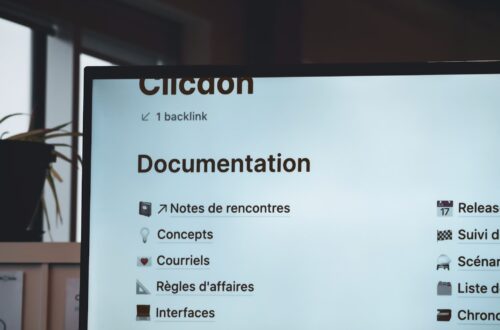Here’s the uncomfortable truth: most voice AI initiatives fail not because of bad technology — but because of poor team design.
In 2025, deploying a voice AI platform isn’t a “tech project.” It’s a cross-functional initiative that blends engineering, data science, linguistics, design, and customer experience. Yet too many organizations still treat it like an IT add-on.
Let’s break down what a well-structured voice AI team actually looks like — and how the right people in the right roles can multiply your ROI, reduce time-to-deployment, and keep your voice operations sustainable.
The Strategic Foundation: Why Structure Matters
A voice AI implementation roadmap (see our homepage) succeeds when its organizational design mirrors its system architecture — modular, scalable, and interconnected.
In consulting engagements, I’ve seen this play out repeatedly:
- Companies that create clear accountability across AI, product, and operations hit deployment milestones 40% faster.
- Teams that skip governance spend 2–3x longer troubleshooting misaligned expectations and integration issues.
The point? Structure defines velocity. And velocity defines competitive advantage.
Core Roles in a Voice AI Team
Here’s the modern voice AI team structure that delivers both technical depth and business agility:
| Role | Primary Function | Key Outputs |
|---|---|---|
| AI Architect / Technical Lead | Defines system design, ensures scalability, integrates APIs | Deployment blueprints, infrastructure stability |
| Data Scientist / ML Engineer | Trains and optimizes models for speech, NLP, and sentiment | Model accuracy, bias mitigation, performance metrics |
| Conversation Designer | Crafts flows, tones, and personas for natural human-AI interaction | Conversational scripts, tone consistency |
| Voice UX/UI Specialist | Aligns design with behavioral and acoustic usability | Prototypes, accessibility design |
| Product Owner / Program Manager | Balances business goals and delivery execution | Roadmaps, prioritization frameworks |
| Compliance and Privacy Officer | Manages data governance and ethical compliance | Security audits, regulatory reports |
Each role interlocks — the ML engineer can’t optimize what the conversation designer hasn’t clearly mapped, and the compliance officer ensures the entire pipeline respects privacy frameworks.
Organizational Structures: Centralized vs Distributed Teams
Here’s a question many leaders overlook: Should your voice AI function sit under IT, Product, or CX?
There are three primary structures to consider:
- Centralized AI Unit – Works best for enterprises managing multiple AI products. It allows standardized governance but can slow experimentation.
- Embedded Product Teams – Voice AI experts sit within functional teams (sales, support, etc.). Enables rapid domain adaptation, but risks duplication.
- Hybrid Model – Central governance with decentralized execution. This has emerged as the most scalable structure for 2025 enterprises deploying globally.
“We realized we didn’t need a bigger team, we needed a smarter one — clearer interfaces between functions.”
— Rajeev Menon, VP of Customer Automation, Global Logistics Group
Scaling from Pilot to Global Deployment
A proof-of-concept can run on a small team — maybe a data scientist, a backend engineer, and a designer.
But scaling to a global deployment (like multi-country voice implementations) requires specialized roles:
- Localization experts to adapt voice and tone across languages.
- DevOps and MLOps engineers to manage model drift, versioning, and latency.
- CX strategists to align automation with customer satisfaction goals.
At the enterprise level, success depends less on coding ability and more on orchestration — synchronizing workflows between AI, IT, and business units.
Managing Ongoing Responsibilities
Once deployed, voice AI maintenance becomes a team sport.
Monitoring accuracy, handling new intents, and retraining models are continuous processes.
Smart teams adopt RACI frameworks — clarifying who’s Responsible, Accountable, Consulted, and Informed at each maintenance stage.
This prevents overlapping ownership and ensures technical accountability scales with business growth.
Leadership and Change Management
Even the most technically brilliant teams fail without buy-in from leadership and end-users.
That’s why the Voice AI project manager must act as both translator and diplomat — bridging the gap between data scientists and customer experience stakeholders.
Consider establishing an AI Steering Committee that meets quarterly to review:
- Model performance trends
- Ethical and privacy implications
- Business impact metrics
This governance rhythm keeps the initiative strategically aligned while maintaining flexibility in execution.
Strategic Implications
The structure you choose isn’t just operational — it’s cultural.
Centralized teams tend to produce safer, slower innovation. Distributed ones, faster but riskier iterations.
The best voice AI leaders strike a balance — encouraging autonomy within a controlled governance framework.
The bottom line: You don’t build great voice AI through technology alone. You build it through teams that know how to translate technical success into business outcomes.
If you’re evaluating structure or scaling strategy, explore how TringTring’s integrations and architecture support distributed team environments — enabling multiple departments to collaborate while keeping data centralized.






